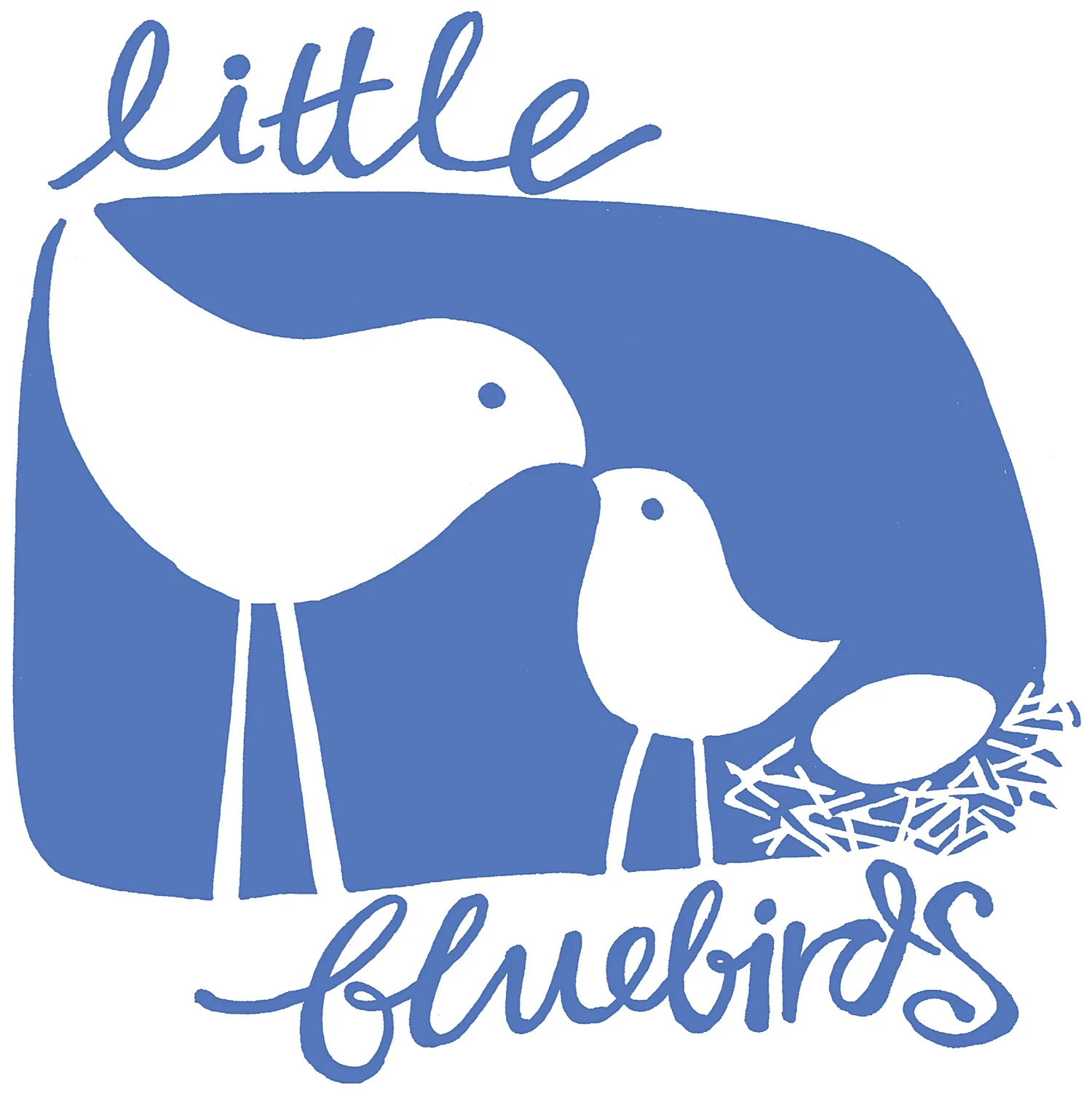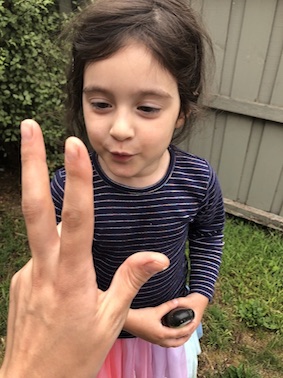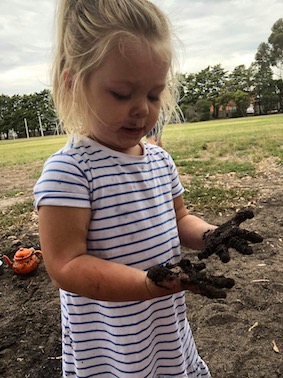Mindful moments
Ahh, December. There’s no doubt it’s a magical time! The weather is warmer, many of us are wrapping up work and school commitments for the year, and Christmas is just around the corner. But this time of year can be quite exhausting too.. right!? Between school and ballet concerts, various Christmas get-togethers and other end of year commitments, it’s easy to feel a little (or a lot) overwhelmed as the days get longer and the nights get busier.
Just like us, our little people can quickly become overwhelmed by the ‘December buzz’ – but with less understanding of WHY their routine has suddenly changed. And unlike adults, children have not yet developed the ability to regulate their emotions which is why they often have moments (which can last much more than a ‘moment’ and might even impact the whole day!!) of being unable to contain their feelings. You may call these moments meltdowns or tantrums. Now if you’ve ever told your child to “just calm down” during one of these moments, you know it simply doesn’t work. In fact, being told to calm down when you’re feeling distressed can be quite infuriating!
So… how can we help our little people manage these BIG emotions, without expecting them to simply turn off their feelings and calm down for our convenience? One way is to practice some simple, calming mindfulness techniques together for those moments when it all becomes “too much”. These techniques do not stop or lessen emotions but are designed to help your child become aware of what they are feeling both inside and outside their body, and to move past the more uncomfortable emotions when they are ready.
Below are 3 calming techniques which you may like to try out during this wonderful and busy festive season.
5 candles
What to do: Hold up your hand with palm facing out and all fingers spread. Ask your child to imagine your hand is a birthday cake, and you want them to blow the candles out! Have them take one big deep breath in through their nose, and then blow on one finger as they exhale through their mouth. Tuck that finger down as if it is a candle that has lost its flame. Repeat this exercise for each finger until you have no ‘candles’ left. Remember to encourage slow, deep breaths rather than short, sharp breaths.
Why it’s helpful: Tears, rapid breathing and an increased heart rate are all common when emotions are high and big feelings take over little bodies. These physical effects of feeling overwhelmed can often be harder to move past than the actual emotions themselves! The idea of this candle exercise is to help your child focus on their breath and naturally begin to slow it without actively trying to calm down or “get over” those feelings of overwhelm.
It may take a few goes to get the hang of it, but by the end you should notice your child’s breathing has slowed and they are feeling calmer overall, and more able to verbalise what they are feeling. I have successfully implemented this technique with children as young as two. Older children may like to use their own fingers as the candles and this gives them a great tool to use when they are feeling anxious or need some help to calm down when you are not around.
Spidey senses
What to do: Stop where you are and sit or lay down with your child. Ask your child to turn on their Spidey (Spiderman) senses**, and take a moment to look, listen and feel what is happening around them. Say out loud 5 things that YOU notice. The more descriptive you can be the better. “I can see the white clouds floating through the blue sky”, “I can hear the birds chirping in the trees” are some great examples of what you might notice. Now have you child name 5 things that THEY notice in the world around them in that moment.
Why it’s helpful: Being conscious of the world around us and what is happening in any given moment can help bring our awareness to the present moment and significantly reduce feelings of worry about what has happened, or what may happen in the future. So by asking your child to notice what they can hear, feel or see is a great way to take focus away from big feelings which may feel overwhelming, without shaming them or expected them to control or stop those feelings.
Ideally you would do this exercise outside, but it will still work if you are indoors. You can adapt it to suit almost any age – young toddlers may be more capable of naming only things they can SEE, while an older child may enjoy the challenge of coming up with one thing for each of the five senses (taste, sight, touch, smell, and sound).
** You don’t have to call them Spidey senses. You could use fairy/magic/superhero senses - or just senses - whatever you think might appeal to your child. The idea is to make it light, interesting and appealing for young children, but you can certainly forgo the “game” aspect altogether if you prefer to keep it simple and focus on the senses themselves. As with any mindfulness exercise, there is absolutely no right or wrong way!!
A mindful mantra
What to do: Repeat a 4 word mantra/phrase aloud while doing a simple hand exercise. For each word, you gently tap one finger on your thumb. So start by tapping your index finger to your thumb, followed by your middle finger and so on. You can do this as fast or slow as you like. Repeat 3 times (or more) and have your child join in when they are ready. Here are 2 examples:
Calm (index finger to thumb)
Begins (middle finger to thumb)
With (ring finger to thumb)
Me (pinky finger to thumb)
I (index finger to thumb)
Am (middle finger to thumb)
Feeling (ring finger to thumb)
Peaceful (pinky finger to thumb)
Why it’s helpful: The action of gently tapping each finger to the thumb gives children a physical sensation to focus on, and acts as a way of bringing their attention to the present moment rather than allowing worrying thoughts of the past or future to take over. By saying a positive statement aloud, we can focus more on the things we CAN control which allows us to let go of things we may not be able to control.
For example: by repeating “I am feeling peaceful” with you at the start of their first day of school, your child will be reminded that they are capable of feeling peaceful even if the environment may be new and challenging. This technique is perhaps more suitable for older pre-schoolers and primary age children, but you can certainly begin to introduce it from any age.
Pro tip: just like any new skill, mindfulness is best introduced to your child when they are feeling calm and better able to learn. If you practice together regularly, they will be more receptive to trying them in moments of distress and eventually learn to use these new tools when they feel stressed, anxious or overwhelmed – even when you are not there to guide them.
It is important to remember that these calming techniques will absolutely NOT stop your child from having big feelings. Feelings are part of being human and although they can come at awkward or inconvenient times, there is nothing to be gained by trying to stop them! These simple, mindful practices are just another tool to have in your ‘parenting toolbox’, which may help to bring some calm to moments of chaos or distress.






